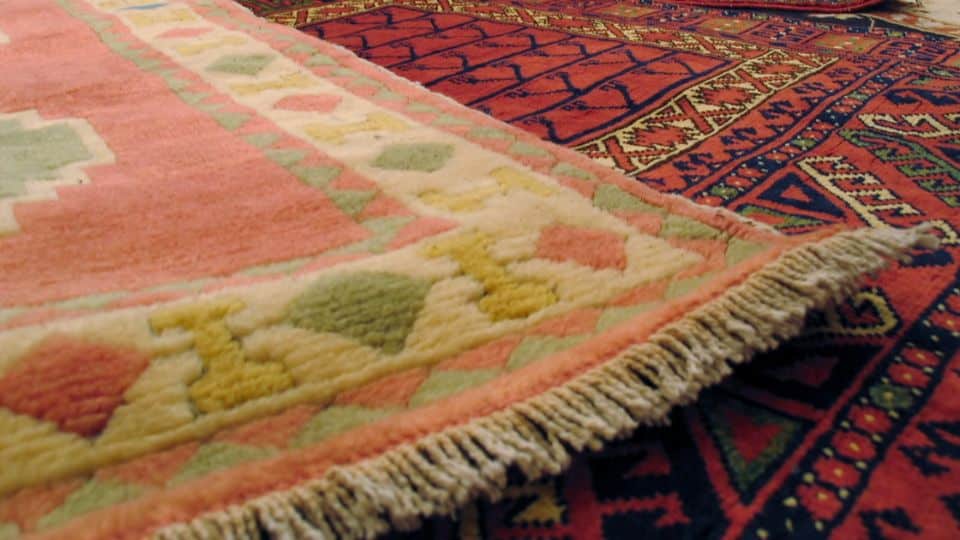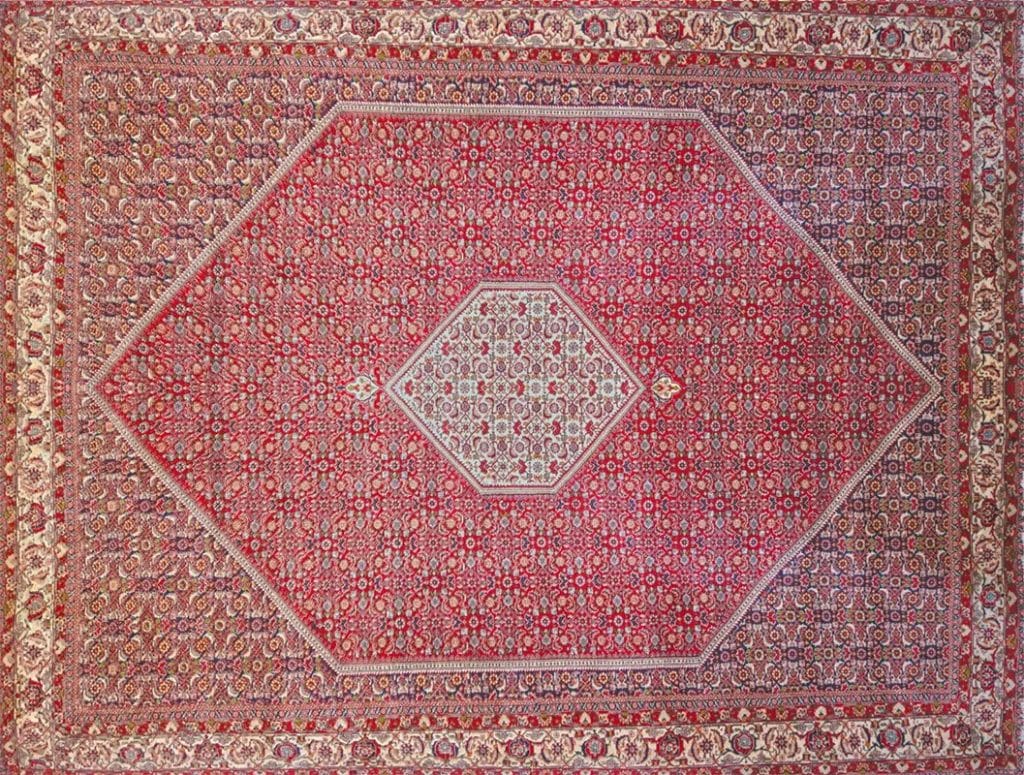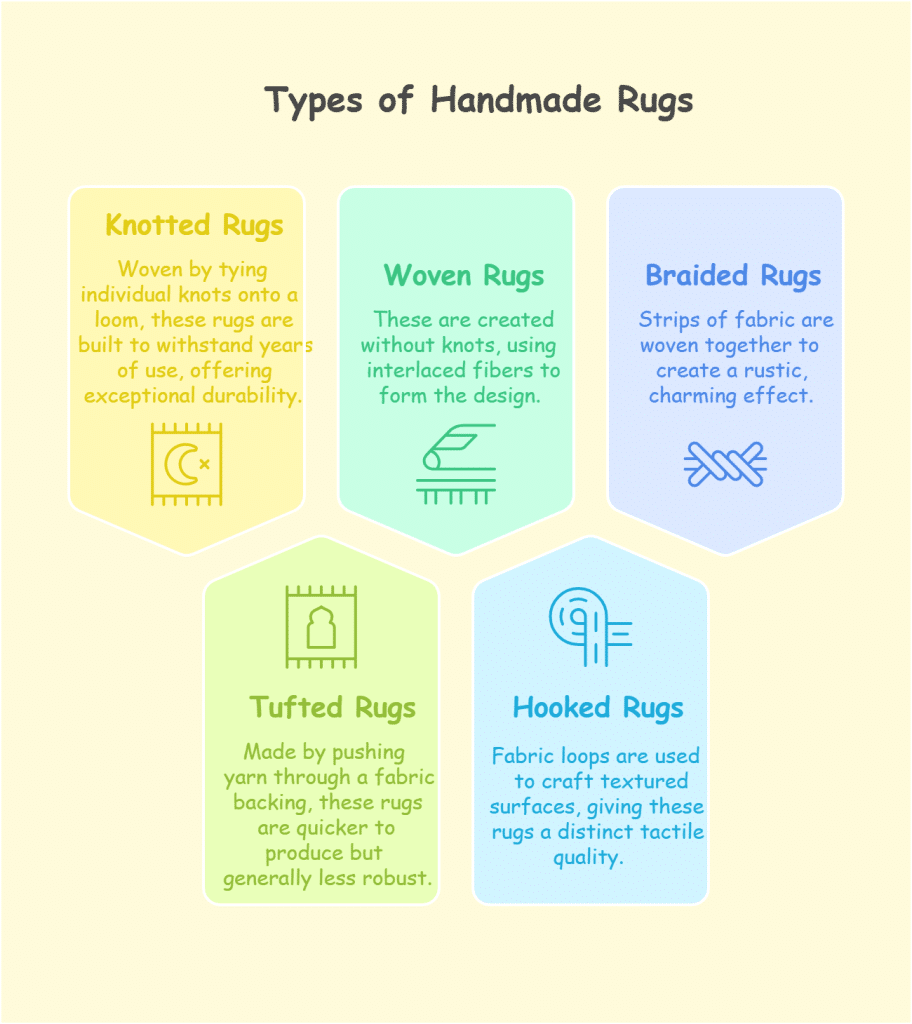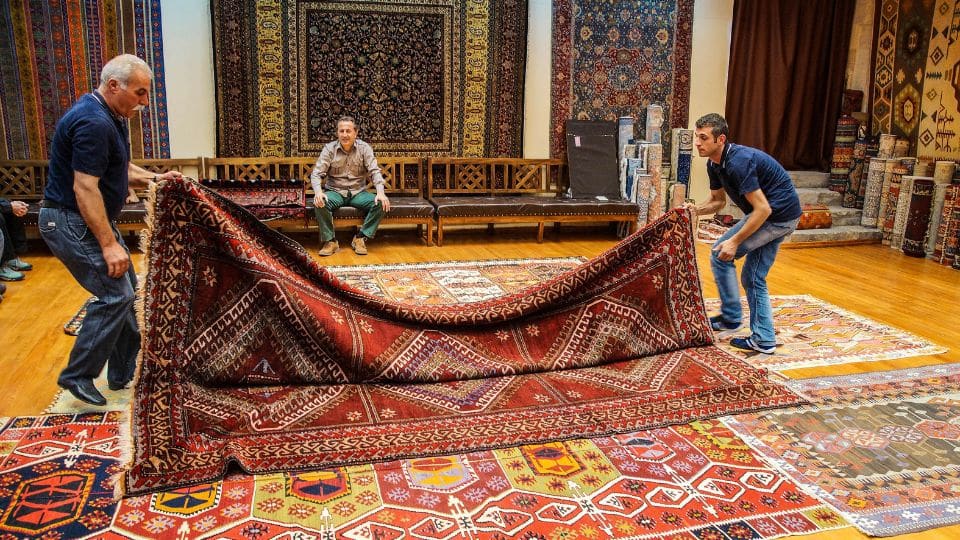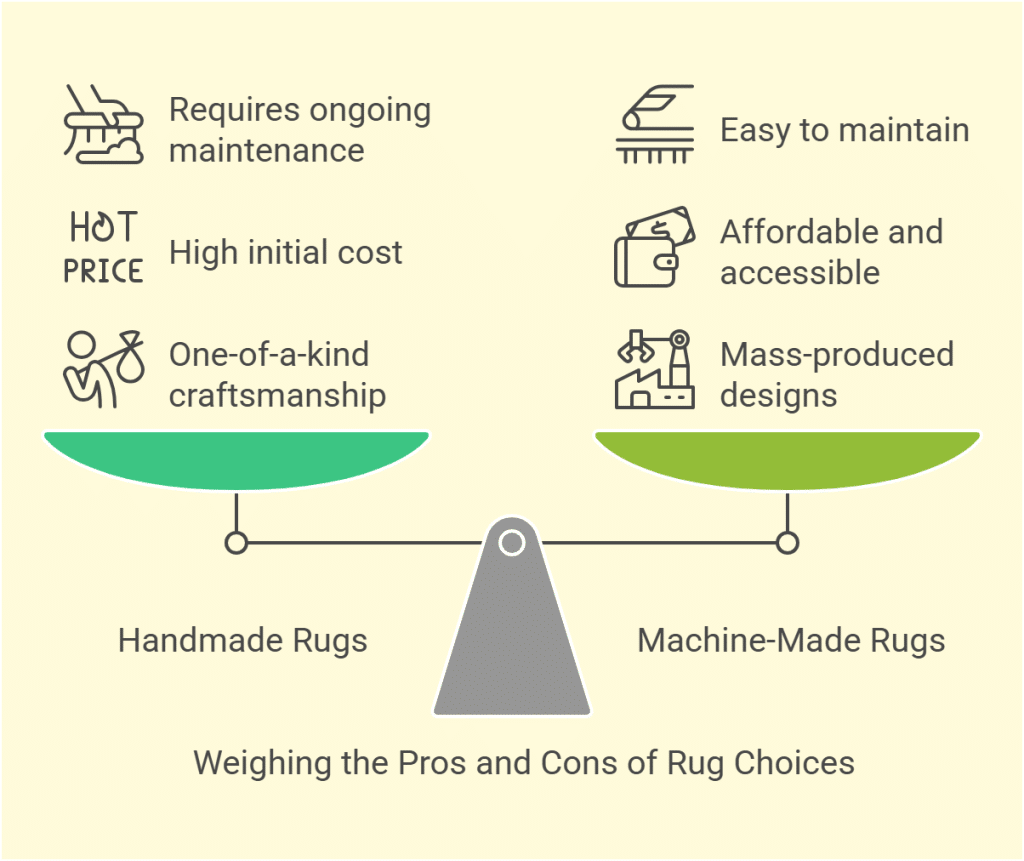Rugs are more than just decorative elements; they infuse a space with warmth, charm, and a sense of luxury. However, when choosing one, the decision between handmade and machine-made options can be daunting. The choice often hinges on several factors, including quality, price, and aesthetic appeal. Which one truly reigns supreme? Let’s delve deeper into both types to understand their merits.
The Essence of Handmade Rugs
What Exactly Are Handmade Rugs?
Handmade rugs are crafted by skilled artisans who employ traditional techniques passed down through generations. Each rug is a labor of love, painstakingly designed and woven to embody the maker’s artistry and skill.
The Art of Crafting Handmade Rugs
The process of creating a handmade rug is meticulous. It involves intricate methods like knotting, weaving, or tufting, each demanding immense patience and dedication. These creations may take months, or even years, to complete, depending on the complexity of the design.
Types of Handmade Rugs
- Knotted Rugs – Woven by tying individual knots onto a loom, these rugs are built to withstand years of use, offering exceptional durability.
- Tufted Rugs – Made by pushing yarn through a fabric backing, these rugs are quicker to produce but generally less robust.
- Woven Rugs – These are created without knots, using interlaced fibers to form the design.
- Hooked Rugs – Fabric loops are used to craft textured surfaces, giving these rugs a distinct tactile quality.
- Braided Rugs – Strips of fabric are woven together to create a rustic, charming effect.
The Mechanics of Machine-Made Rugs
What Are Machine-Made Rugs?
Machine-made rugs are produced en masse in factories through automated processes. The use of power looms allows for rapid production, which, in turn, reduces costs and makes these rugs more affordable and widely available.
The Manufacturing Process
Thanks to the efficiency of power looms, machine-made rugs can be churned out in mere hours. This automation allows manufacturers to produce thousands of identical designs, creating a standardized product at a rapid pace.
Materials Commonly Used in Machine-Made Rugs
- Synthetic Fibers like polyester, polypropylene, and nylon dominate the machine-made rug market.
- Blended Materials that replicate the texture and feel of natural fibers.
Comparing Quality and Durability
The Lifespan of Handmade Rugs
When well cared for, handmade rugs—especially knotted varieties—can last for generations, often outliving their owners. Some antique rugs, having stood the test of time for over a century, still maintain their original splendor.
How Long Do Machine-Made Rugs Last?
Machine-made rugs typically have a shorter lifespan, lasting around 5-10 years, depending on foot traffic, material quality, and upkeep.
Wear and Durability
Handmade rugs tend to resist the effects of time more effectively, thanks to the use of premium materials and tightly woven designs. In contrast, machine-made rugs, while functional, often succumb to wear and tear more quickly.
Materials: Handmade Versus Machine-Made Rugs
Handmade Rugs: Natural Fibers
- Wool – Known for its softness, resilience, and natural resistance to stains.
- Silk – Bestowing an opulent texture and a lustrous finish, silk rugs are the epitome of luxury.
- Cotton – Light and breathable, cotton rugs offer comfort and versatility.
Machine-Made Rugs: Synthetic Fibers
- Polypropylene – An affordable, water-resistant synthetic fiber.
- Polyester – Soft but prone to flattening over time.
- Nylon – Durable but may experience fading with extended use.
Price and Long-Term Investment
Handmade rugs are undoubtedly an investment. While they come with a higher initial price tag, their long lifespan and ability to retain value over time make them a worthwhile acquisition. On the other hand, machine-made rugs, while economical, depreciate in value quickly and are less likely to endure for generations.
Environmental Considerations
Handmade rugs often utilize organic, biodegradable materials, which make them environmentally friendly. Machine-made alternatives, however, rely heavily on synthetic fibers that contribute to plastic waste, making them a less sustainable option in the long run.
Which Option Reigns Supreme?
Handmade Rugs: Advantages & Disadvantages
✔ One-of-a-kind craftsmanship that embodies artistry
✔ Durability that lasts for generations
✔ Eco-friendly and made from natural, biodegradable materials
❌ High initial cost
❌ Requires ongoing maintenance to preserve their beauty
Machine-Made Rugs: Advantages & Disadvantages
✔ Affordable and readily accessible
✔ Easy to maintain with less effort required for cleaning
✔ Quick turnaround time for production
❌ Less durability, wears out faster with use
❌ Lacks uniqueness, mass-produced designs
Final Thoughts
For those seeking a timeless investment piece that will endure for years, a handmade rug is the obvious choice. However, for those with a more budget-conscious mindset or those seeking temporary décor, a machine-made rug may better suit their needs. Ultimately, the decision is influenced by personal taste, budget constraints, and the desired lifespan of the rug.
Frequently Asked Questions
- Which type of rug has a longer lifespan?
Handmade rugs, particularly those with knotted designs, outlast machine-made rugs by decades when properly cared for. - Are handmade rugs prohibitively expensive?
While handmade rugs tend to have a higher price tag, they are a valuable investment that appreciates over time. - How can I tell if a rug is handmade?
A simple inspection of the rug’s back will reveal whether it’s handmade—if the design appears inconsistent and not perfectly uniform, it’s likely a handmade piece. - Do machine-made rugs appear cheap?
Not necessarily. While they lack the depth and individuality of handmade rugs, machine-made rugs can still be stylish and visually appealing. - Can handmade rugs be customized?
Yes, many artisans offer bespoke services, allowing you to select your preferred design, colors, and dimensions for a truly personalized rug.

